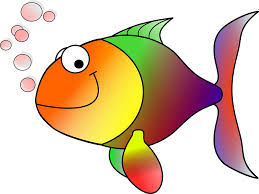How clean is the water you swim in?
- Jeannie Collins Beaudin
- Jul 21, 2017
- 4 min read
Would you boil your lobster in ocean water these days? Might want to think twice about that...

Water quality at beaches in our area is being questioned, with beach closures more than once already this summer due to excessive fecal bacterial counts. Some types of pollution can be less obvious than the photo above. How clean is the water your kids are swimming in? Is it even being tested so you know?
The factors that contribute to increased bacteria in our coastal waters, rivers and lakes are not all known. However, it seems likely that the more crowded and popular an area is, the greater the likelihood of a problem developing. Population density, surface water run-off, and aging septic systems are all suspected contributors to high fecal bacteria counts. These bacteria put swimmers at risk of illness and infections...
Adding to the problem, is that government water testing requires 48 hours – water samples are being taken on the weekend and results are only announced on Monday, after many have spent the weekend swimming in potentially polluted water. Government officials insist that results cannot be provided in a more timely manner.
A quick internet search found a do-it-yourself test, Aquavial, developed and manufactured at University of Waterloo in Ontario that detects several bacteria (including E.coli, Pseudomonas, Salmonella, and Staphylococci), biofilm and fungi, even when levels are very low. It can be used for testing drinking water as well as any fresh water you plan to swim in, and gives results in 15-30 minutes. Check it out at https://aquabsafe.com if you want to check the river or lake you swim in – a single kit costs $20 and they sell a 6-pack for $100…enough to do weekly testing for the rest of the summer!
Unfortunately, it is the presence of enterococci that confirm fecal matter in salt water as E. coli grown only in fresh water so, to my knowledge, this test could not be used in ocean waters to detect fecal contamination. Currently the only fast test is for E. coli DNA, requiring only 4 hours, but this test is very costly and not widely available.
Much of the economy in coastal areas – especially tourism and fisheries – is tied to the environment. Our shores and coastal waters need to be kept clean to ensure these industries remain healthy. Those who use coastal areas for recreation or commerce need to be educated in how to preserve important wetlands and prevent damage to sensitive coastal areas. It is much easier (and less expensive!) to prevent damage than it is to try to repair the damage later.
Coastal areas, with their dunes and wetlands, are an ecosystem that serves many functions:
Filtration
Run-off water flows slowly through a marsh, allowing sediments to settle.
Wetland plants consume excess nutrients (including heavy metals) preventing accumulation in lakes, rivers and oceans.
Wetlands filter out and absorb bacteria from surface run-off water. Marshes can filter out up to 90% of bacteria.
Storage of water
Slowed water flow allows ground water to be replenished
Biological productivity
Because they absorb nutrients, wetlands are highly biologically productive. Freshwater wetlands compare to tropical rainforest in plant productivity.
Wildlife habitat
95% of commercially and recreationally harvested fish are wetland dependant. Many bird, animal and insect species also rely on wetlands.
Erosion protection
Dunes and wetlands protect the coastline against storms, erosion and rising sea levels.

What can we do to help protect our dunes and wetlands?
Stay out of the dunes
Use only designated walkways when crossing dunes and wetlands.
Beach grass and dune vegetation protect against loss of dune sand and dunes provide habitat for animals and birds, and protect wetlands during storms. Simply stepping on beach grass can kill the plant.
Leash your dog
Leashing keeps dogs out of dunes where they can damage plants and disturb wildlife, and away from other people who may not love dogs as you do.
“Carry in, carry out”
Be sure to take everything you brought with you when you leave (including doggie do-do!)
Litter can take years to decompose (even when it’s out of sight in the ocean) and it can be a health hazard to birds, wild life and sea creatures.
No open fires
Using driftwood for fires removes a valuable natural resource that can trap sand and stabilize dunes.
Pollution of coastal waters is tied to destruction of wetlands along the coast. We all need to do what we can to preserve these natural filtering structures so everyone can enjoy our beaches and oceans for generations to come.
In eastern Canada, several environmental groups have sprung up demanding a governmental moratorium on further commercial development within 500 meters of wetlands until the sources of current problems are identified and corrected. Meanwhile, simple testing with confirmation of the more complex government testing later may be an effective way to protect your family from unnecessary exposure to bacteria and fungi while enjoying your favourite summer water activities in an area that is at risk.
Educate yourself and others who use coastal areas about how to prevent damage to natural structures that protect the health of our coastal areas and the people and wildlife who use them!







Comments